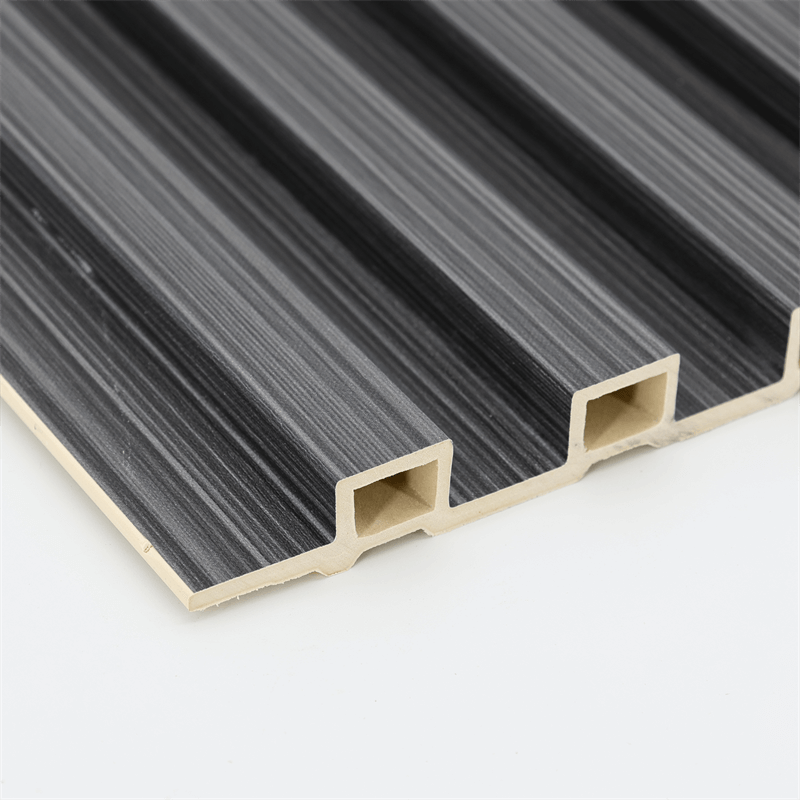The concept of smart homes, where technology seamlessly integrates with everyday living, is gaining popularity as individuals seek to enhance their comfort, convenience, and environmental sustainability.
As smart home technology continues to evolve, the choice of building materials plays a crucial role in achieving a harmonious balance between technological innovation and sustainable practices.
Wood-plastic composite (WPC) wall panels offer a unique solution that combines the benefits of technology and sustainability, making them an ideal choice for smart homes.
This essay explores the integration of WPC wall panels in smart homes, examining their compatibility with smart home technologies, energy efficiency, indoor air quality, and long-term sustainability.
I. Compatibility with Smart Home Technologies
Smart home technologies aim to create an interconnected and automated living environment, allowing homeowners to control various aspects of their homes through connected devices and applications.
WPC wall panels are designed to seamlessly integrate with smart home technologies, providing a versatile and aesthetic backdrop for the implementation of these technologies.
WPC panels can be easily customized to accommodate smart home devices such as voice-controlled assistants, smart lighting systems, and security sensors.
The smooth surface of WPC panels allows for the discreet installation of wiring and cables, ensuring a clean and uncluttered appearance.
Additionally, the structural durability of WPC panels provides a sturdy foundation for mounting smart home devices, ensuring their stability and functionality.
II. Energy Efficiency
Energy efficiency is a key component of sustainable living, and incorporating energy-efficient features in smart homes is essential.
WPC wall panels contribute to energy efficiency in several ways, making them an excellent choice for sustainable smart homes.
Firstly, WPC panels have excellent thermal insulation properties, helping to reduce heat transfer between indoor and outdoor environments.
This insulation capability enhances the energy efficiency of the home by reducing the reliance on heating and cooling systems, thereby decreasing energy consumption and associated costs.
Secondly, the manufacturing process of WPC panels often incorporates recycled materials, reducing the demand for virgin resources and minimizing the environmental impact.
This sustainable approach aligns with the principles of energy conservation and reduces the carbon footprint of the smart home.
III. Indoor Air Quality
Creating a healthy indoor environment is a crucial aspect of smart home design. Poor indoor air quality can have a detrimental impact on the well-being of occupants.
WPC wall panels contribute positively to indoor air quality by reducing the presence of harmful pollutants and allergens.
WPC panels have lower emissions of volatile organic compounds (VOCs) compared to some traditional wall materials.
VOCs can be released from certain building materials, furnishings, and cleaning products, leading to indoor air pollution and health risks.
By choosing WPC panels, homeowners can mitigate the potential health hazards associated with high levels of VOCs, ensuring a healthier living environment for themselves and their families.
Furthermore, the resistance of WPC panels to mold and mildew growth helps prevent the proliferation of allergens in indoor spaces.
Mold and mildew can trigger respiratory problems and allergies, affecting the health and comfort of occupants.
The inherent resistance of WPC panels to moisture absorption reduces the conditions necessary for mold and mildew development, improving the overall indoor air quality and contributing to a healthier living environment.
IV. Long-Term Sustainability
Sustainability is a fundamental consideration in the design and construction of smart homes.
WPC wall panels offer long-term sustainability benefits that align with the principles of sustainable living.
The composition of WPC panels often incorporates recycled materials, such as wood fibers or flour, reducing the reliance on virgin resources.
This recycling process helps minimize waste and contributes to a circular economy, where materials are reused rather than disposed of after their initial use.
Moreover, the durability of WPC panels ensures their longevity, reducing the need for frequent replacements.
This long lifespan translates to reduced waste generation and lower environmental impact over time.
Additionally, the low maintenance requirements of WPC panels, such as their resistance to rot, decay, and fading, further contribute to their long-term sustainability.

Integrating WPC wall panels in smart homes offers a synergistic combination of technology and sustainability.
Their compatibility with smart home technologies allows for seamless integration, providing a visually appealing backdrop for the implementation of automation and connectivity.
The energy efficiency of WPC panels contributes to reduced energy consumption and costs, supporting sustainable living practices.
Their positive impact on indoor air quality ensures a healthier living environment, free from harmful pollutants and allergens.
Lastly, the long-term sustainability of WPC panels, with their recycled materials and durability, aligns with the principles of environmental responsibility.
By incorporating WPC wall panels into smart homes, homeowners can embrace the potential of technology while prioritizing sustainability.
The integration of WPC panels enhances the overall smart home experience, creating an eco-friendly and comfortable living environment.
As the demand for smart homes continues to grow, the adoption of WPC wall panels becomes a smart choice for individuals seeking a harmonious blend of technology and sustainability in their living spaces.


